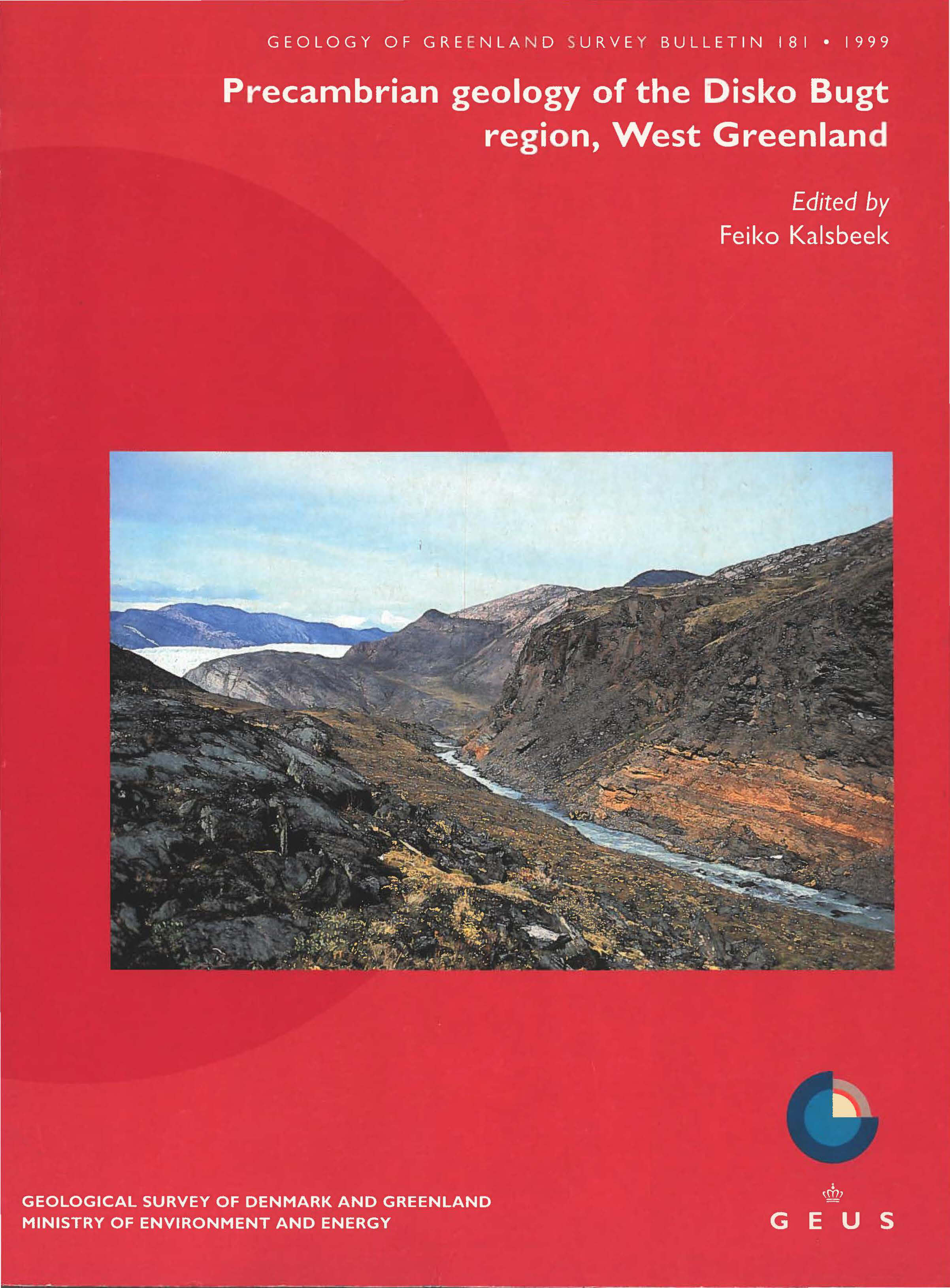An Archaean sill complex and associated supracrustal rocks, Arveprinsen Ejland, north-east Disko Bugt, West Greenland
DOI:
https://doi.org/10.34194/ggub.v181.5117Keywords:
Archaean, Disko Bugt, geochemistry, sill complex, subvolcanic rocks, supracrustal rocks, West GreenlandAbstract
Archaean supracrustal rocks on Arveprinsen Ejland comprise mafic and felsic volcanic rocks overlain by an epiclastic sedimentary sequence invaded by a mafic to ultramafic sill complex. The latter has a strike-length of 7500 m and a cumulative preserved thickness of 2000–2500 m and amounts to nearly 50% of the exposed thickness of the supracrustal rocks. Chilled and locally peperitic contacts are developed between component sills and the inter-sill metasedimentary septa. The sub-alkalic sill complex and mafi c lavas and tuffs are high-magnesium tholeiites and basaltic komatiites whereas the felsic rocks are calc-alkaline rhyolites and dacites. Chondrite- and MORB-normalised spider diagrams affirm the close similarity of the mafic volcanic rocks and the sill complex; they are also consistent with a tholeiitic or komatiitic affinity. Tectonomagmatic discrimination plots suggest an ensialic arc-related setting for the sill complex and the mafic and felsic volcanic rocks. The sill complex was progressively emplaced, as an upward-younging sequence of component sills, beneath 2 to 2.5 km of seawater and substantially less than 0.5 km of wet sediment. Sills formed when the magmatic pressure exceeded the effective overburden pressure of the sediment plus the vertical tensile strength (To) of the host materials. Intrusion was probably promoted by the drop in To at the interface between contact-lithified and poorly lithified strata. The thickness of the sill complex was accommodated by dilational lifting plus the capacity of an intrusion to create space through expulsion of water from wet sediment.
Downloads
Published
Issue
Section
License
This article is distributed under a CC-BY 4.0 licence, permitting free redistribution and reproduction for any purpose, even commercial, provided proper citation of the original work. Author(s) retain copyright over the article contents.


